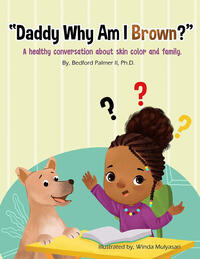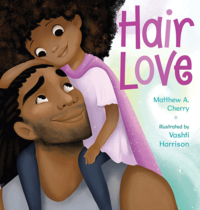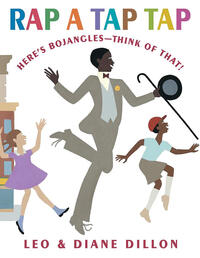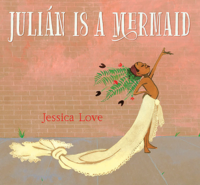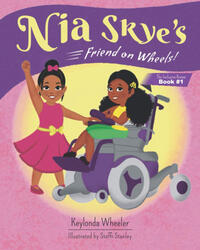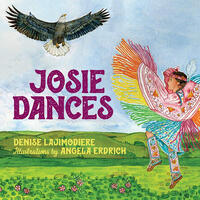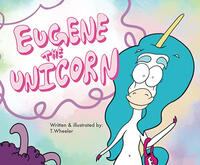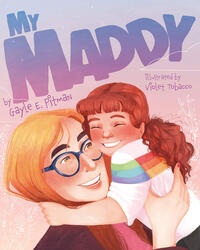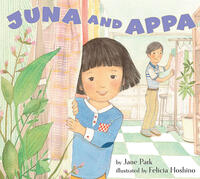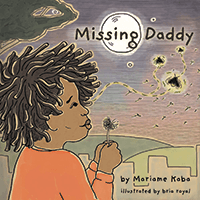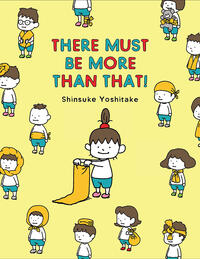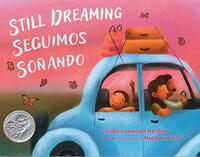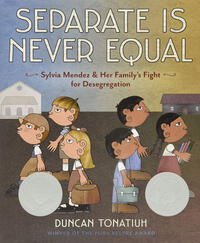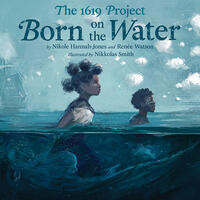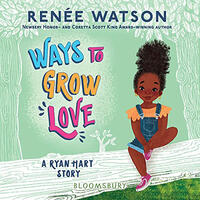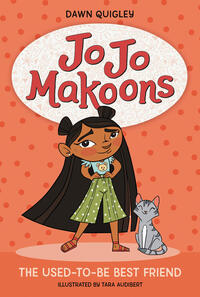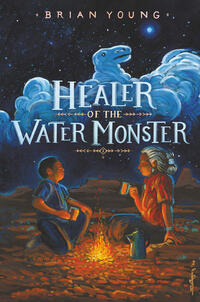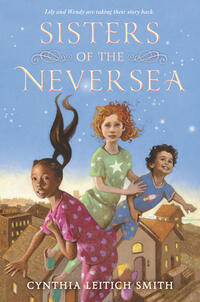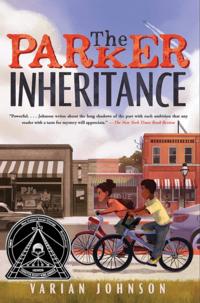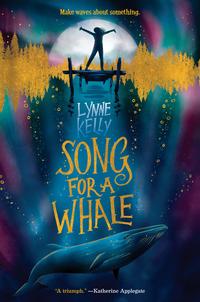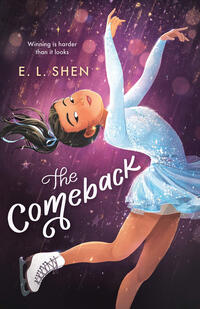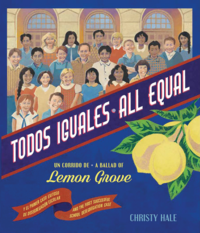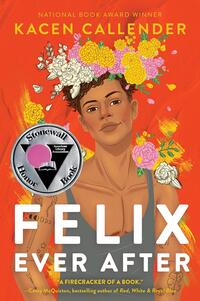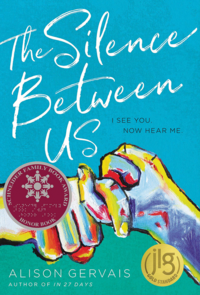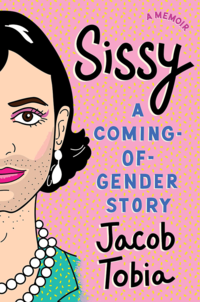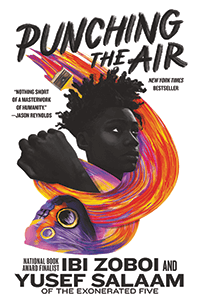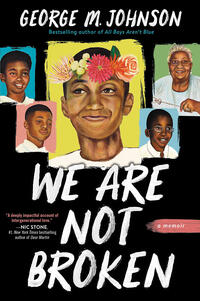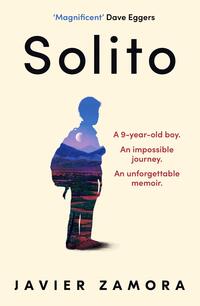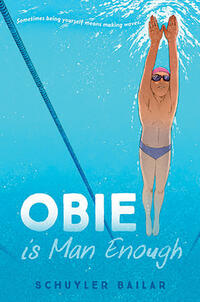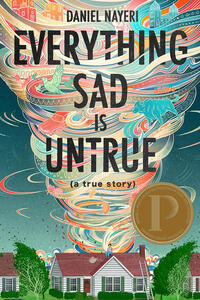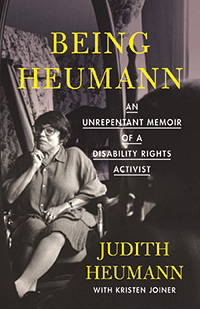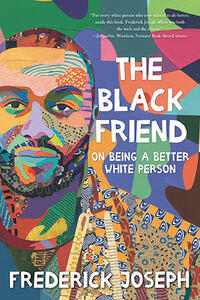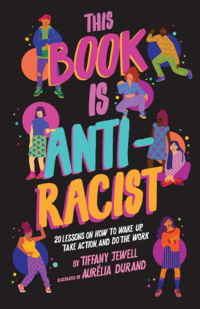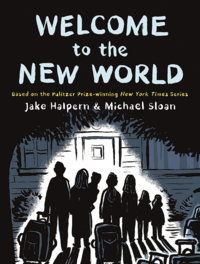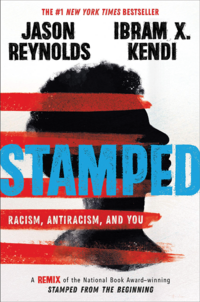Stories are a deeply meaningful way that we learn about the world, and they can build empathy and understanding of ourselves and others. Through stories we can connect with a character and share another viewpoint about the world. But importantly, stories emphasize that we are not alone in our emotions and experiences.
At Learning for Justice, we love to read. Here are a few of our favorite book recommendations from our magazine book reviews that affirm identities, celebrate diversity and highlight justice. We are happy to share them with you and hope that you will enjoy and share them too.
Growing Readers
(Elementary School and Younger)
Daddy Why Am I Brown? A Healthy Conversation About Skin Color and Family celebrates the rich tapestry of human phenotypes, offering a thoughtful guide on discussing skin tones with kids. While skin color may offer clues about where a person’s ancestors came from, we must get to know people to learn anything about their behaviors or background. Written by Bedford Palmer II, Ph.D., and illustrated by Winda Mulyasari, this book emphasizes the joys and rewards of taking the time to do that work. Pick up this book for an accessible conversation starter. A great guide for helping children understand the differences among race, skin color, ethnicity and culture.
Hair Love teaches self-love and exemplifies representation for Black people and Black culture. Matthew A. Cherry’s book follows a little girl named Zuri as she works with her father to create a perfectly coifed hairstyle. In a time when Black youth are penalized for wearing their natural hair, this story shows an appreciation for the magic of grooming coarse or kinky hair, represented by Afros, locs, braids and a head wrap. The tenderness of Black fatherhood is also on display, offering plenty of heartwarming moments. A push against attempts to disparage those who dare to take pride in the way they look.
Rap a Tap Tap: Here’s Bojangles—Think of That! by Leo and Diane Dillon, includes the authors’ rich illustrations combined with wonderful rhymes that are sure to capture the imaginations of young readers. This 2002 publication provides a compelling introduction to the artistry of Bill “Bojangles” Robinson, a tap-dancing legend who broke racial boundaries in the U.S. entertainment industry—on the vaudeville stage, on Broadway, on radio and in Hollywood—throughout the early 20th century. This lovely and lively book will delight young readers and introduce them to an artist with an important place in the history of U.S. popular culture.
“Grandma is the original warrior,” writes Junauda Petrus in Can We Please Give the Police Department to the Grandmothers? Illustrated by Kristen Uroda, this richly woven tapestry of words honors the liberatory inroads our elders made while also imagining a world where care and support rule the day. Beautiful imagery accompanies this magical aural experience. This loving work will spark imaginations and offer a fabulous example of how to freedom dream.
When Julián spots three mermaids on the subway home, he is in awe. He knows that he is a mermaid too—but he’s not sure what his abuela will think when he dresses up like one. A magical story written and illustrated by Jessica Love, Julián Is a Mermaid provides children the opportunity to see how important it is to express who you truly are—and how wonderful it is when the people you love encourage you to accept yourself. Warmth and love radiate from this colorful story of self-acceptance.
Keylonda Wheeler writes in the introduction to Nia Skye’s Friend on Wheels that, “it’s so important that disabled people are shown in everyday reading just living their lives.” In this charming book—the first in a series titled The Inclusive Krewe—Wheeler accomplishes that goal by highlighting the friendship between two kindergarten-aged girls who learn from each other as they arrange playdates and engage in fun family activities. Steffi Stanley’s delightful illustrations make this story pop. Wheeler’s work models inclusiveness is the most wonderful way. Children will love this story!
Josie Dances, by Denise Lajimodiere, is a beautiful story of a young Ojibwe girl preparing for her powwow debut. This book, with wonderful illustrations by Angela Erdrich, explores the intersection of Indigenous culture, family, nature and traditions—offering an essential perspective to any library collection. With help from her family and the support of her community, Josie gathers what she needs to receive her spirit name and participate in her first powwow. An essential telling of Ojibwe culture that will have readers celebrating and honoring Josie’s journey.
Written by Carole Lindstrom, an Anishinaabe/Métis author tribally enrolled with the Turtle Mountain Band of Ojibwe, and illustrated by Michaela Goade, an enrolled member of the Tlingit and Haida Indian Tribes of Alaska, We Are Water Protectors connects Indigenous traditions to present-day activism. Facing the threat of a pipeline—a manifestation of a tale of the snake that will threaten the land—a young water protector explains why water is sacred and vows to defend it. This story is a call to action insisting that Indigenous people are not only still here but still at the forefront of the fight for climate justice. A beautifully illustrated and profoundly told tale that centers the courageous work of Indigenous activists while reminding readers that we are all connected by the water they protect.
In Eugene the Unicorn: A Kid’s Book To Help Start LGBTQ Inclusive Conversations, author and illustrator T. Wheeler demonstrates how to engage in age-appropriate discussions about difference, diversity and acceptance. The rhyming text will certainly engage little listeners as they learn that the thing we have in common is that we all have individual differences. In this charming book, Wheeler encourages self-acceptance, celebrates diversity, and writes, “No one can be a better you than you.” Children will love the rhythm of this read-aloud book with its specific focus on inclusivity.
It Feels Good to Be Yourself: A Book About Gender Identity by Theresa Thorn and illustrated by trans artist Noah Grigni helps young readers understand gender expression and affirms the spectrum of gender identities. The book includes a glossary, a note to readers about pronouns and a list of additional resources that focus on gender identity. Enchanting illustrations will delight young readers as they learn that all people are valued just the way they are. This beautiful book is a great introduction to the many expressions of gender in the world.
My Maddy by Gayle E. Pitman, Ph.D., and illustrated by Violet Tobacco tells the story of a child and their nonbinary parent, Maddy. Age-appropriate examples of ordinary things that are neither one thing nor the other—for instance, hazel eyes, which are neither green nor brown but a combination of both—allows young readers to gain an understanding of gender expansiveness. Filled with colorful illustrations, this book also includes a substantial note to readers addressing questions that may arise from the reading. My Maddy is an engaging story for children and adults alike.
In Juna and Appa, a heartwarming book by Jane Park with illustrations by Felicia Hoshino, Juna helps her father, Appa, at their dry-cleaning shop. When a customer berates Appa for losing a fancy jacket, Juna uses her imagination to search for the jacket, running into different fathers in the animal kingdom. These animals help Juna remember the special relationship she has with Appa, including the sacrifices they make for each other. This book is Jane Park’s beautiful love letter to the children who grow up working in their family’s stores, just like she did.
In Eyes That Kiss in the Corners, written by Joanna Ho and illustrated by Dung Ho, we learn about a child from an East Asian family who recognizes that her eyes are different from the eyes of the other children around her—and those differences are just fine! Unlike her peers, the protagonist’s eyes “kiss in the corners and glow like warm tea,” just like the eyes of her mama, amah and sister. With a sweet departure from identity-affirming books rooted in struggle, this one simply celebrates, and that’s a beautiful thing. No existential crisis here—just heart-warming self-love and family pride.
Missing Daddy by Mariame Kaba addresses the youngest victims of the prison industrial system—children with loved ones who are incarcerated. Alongside beautiful illustrations by bria royal, Kaba renders in detail the experience of children who may not fully understand their loved ones’ extended absence. The story’s description of ridicule at school, domestic stress when caretakers manage households alone and enforced separation from a beloved father may help young readers feel less alone as they manage the impact of long-term and long-distance incarceration on their families and themselves. Kaba’s emotive work helps children, their caretakers and other interested parties acknowledge the painful impact of incarceration.
Feeling angry and lonely after being teased by bullies, Thuy walks home alone in the snow, making her footprints look like those of animals. When she gets home, Thuy and her two mothers imagine creatures who always have courage—just like Thuy. Written by Bao Phi and illustrated by Basia Tran, My Footprints is, for young learners, a good look at self-discovery and finding your courage and confidence. A sweet and inclusive story about imagination, finding power from within, and drawing strength and courage from family and cultural heritage.
Shinsuke Yoshitake’s relatable story follows a girl whose brother tells her the future is doomed in There Must Be More Than That! Fearing the destruction of Earth, she is comforted by her grandmother, who assures her that there are always more possibilities than we are aware of at any given movement. Gentle, lighthearted and honest, this story is sure to captivate young readers and provide ample space to discuss the future that we want to be a part of and steps we should take to get there. This story subverts the notion of either-or thinking in a way that is accessible and engaging for young readers.
In Still Dreaming/Seguimos Soñando, author Claudia Guadalupe Martínez and illustrator Magdalena Mora lovingly capture one family’s decision to stay together during the Mexican Repatriation, an undertaught period of history when Mexican Americans were expelled from the United States. This beautiful bilingual book will remind readers of the resilience and beauty of immigrant families who fight to stay together.
In Separate Is Never Equal, Duncan Tonatiuh tells the real story of the Mendez family’s fight in the late 1940s to desegregate schools in California, which would then allow their children to attend quality schools rather than the ramshackle place where children of Mexican families were forced to attend. Using accessible language and art gallery-worthy illustrations, Tonatiuh shows young readers some of the ways that people fight for justice. This work makes it easier for young readers to understand a complex situation through the author’s use of straightforward illustrations and language.
The 1619 Project: Born on the Water requires space and honest conversation—and it is well worth it. Written by Nikole Hannah-Jones and Renée Watson and illustrated by Nikkolas Smith, the book features a young student who is assigned to trace her family’s history and is distraught about not knowing those roots. Enter Grandma, who breaks it down one powerfully crafted poem at a time. She goes from ordinary people living, working and creating joy, to the Middle Passage to Black Lives Matter—and all the resistance, brilliance and life in between. This book affirms that Black history didn’t start with slavery and that “we will survive because we have each other.” A beautiful tool for being real about our history, which our young ones deserve.
In Ways To Grow Love (A Ryan Hart Story, 2), author Renée Watson perfectly captures the feeling of being in elementary school—of sweet childhood friendships, special moments with family, summer camp shenanigans and the seeming enormity of little things. It’s in those little things that this book shines. Ryan Hart is an endearing and relatable heroine—and a passionate Black girl in whom readers will see themselves. Nina Mata’s warm illustrations scattered throughout the book are a particular gift. Young readers will be captivated by the love, strength and everyday magic of Ryan Hart and her family.
Jo Jo Makoons: The Used-to-Be Best Friend is the first in a series written by Native author Dawn Quigley and illustrated by Tara Audibert that features Jo Jo Makoons Azure. Seven-year-old Jo Jo, a member of the Ojibwe Nation, is engaging, smart, funny and attends first grade on the reservation where she lives with her family. The book illustrates the importance of culturally relevant teaching practices, and young readers will certainly recognize themselves in the thoughts and feelings Jo Jo expresses as she moves throughout her busy days. Jo Jo and her best friends will make readers—young and old—eager for the next issue in this series.
Middle Grade Readers
(Upper Elementary and Middle School)
Readers of Healer of the Water Monster by Brian Young will find it easy to immerse themselves in Nathan’s world as he unexpectedly befriends a Water Monster, a Navajo Holy Being, while staying with his grandmother and uncle on the Navajo Reservation. This book explores universal coming-of-age themes such as bravery and friendship while helping readers learn more about the contemporary Navajo Nation, including Navajo science, spirituality, language and culture, along with the challenges the Navajo people face. Brian Young’s ability to center a Diné perspective of the world radiates throughout this powerful novel.
Cynthia Leitich Smith, a Muscogee Creek author, writes Sisters of the Neversea to provide readers with a refreshing counternarrative to the harmful stereotypes about Native people in J.M. Barrie’s version of Peter Pan. Smith’s version centers on Lily, a Muscogee Creek girl, and her white stepsister, Wendy, who travel to Neverland. Upon arrival, Lily and Wendy find that they will have to rely on each other, their inner strength and creative thinking to save themselves. Smith combines universal themes of family and identity with dashes of fairy dust, swashbuckling pirates, and unpredictable obstacles to create a mesmerizing adventure for young readers.
In a box of puzzles in the attic, Candice discovers a letter addressed to her grandmother. This letter answers one of her big questions—why her grandmother left town in shame—but new questions arise. Pooling their resources of deduction and book smarts, Candice and her neighbor Brandon resolve to find answers. In The Parker Inheritance, Varian Johnson’s young protagonists embark on a mystery that will force their town to address its unjust past and the stain that segregation left behind. This clever puzzle stays with you as it presents a mystery to solve: What stories are still being hidden?
Written by sign language interpreter Lynne Kelly, Song for a Whale introduces Iris, a mechanically inclined girl who, as the only deaf student at her school, fixes radios because she understands feeling like no one is listening. When she learns about a whale who sings at a frequency that makes it difficult to communicate, she devises a plan to help him feel less alone. Her journey underscores the importance of empathetic communication, community and representation for readers young and old alike. For any young person who has felt lonely or unheard, this book will sing, and sign, to them.
Adults and children will find it easy to cheer for Maxine Chen, the spunky protagonist in E.L. Shen’s debut work, The Comeback: A Figure Skating Novel. In addition to juggling the challenges of middle school and the pressures of competitive ice skating, Maxine has to attend classes with a student who bullies Maxine for her Chinese heritage. By following Maxine’s journey, readers, too, can learn how pride in yourself is the ultimate comeback. This middle grade novel is relatable to anyone who has struggled to love themselves fully when faced with racism. Note: This book contains racist language and gestures, including a racial slur.
United States history lessons often move quickly from the Civil War to the Civil Rights Movement. But there is a fascinating history sandwiched between those two watershed moments. In Dark Sky Rising: Reconstruction and the Dawn of Jim Crow, Henry Louis Gates Jr. teamed with Tonya Bolden to flesh out the unfinished business of this period for young readers. In their exploration, they detail how freed Black people had agency in helping decide policies to ensure their full citizenship, which was later dismantled through discriminatory laws and violence. This book can help young people contextualize how U.S. policy has framed and supported white supremacy—and acknowledge our rights’ fragility.
In 1930, 12-year-old Roberto Álvarez was attending Lemon Grove School, where he and other Mexican American kids learned alongside their Anglo-American classmates. When his community discovered the school board’s plan to segregate Mexican American students into a far inferior “barn” school, they fought back, choosing Roberto as the plaintiff for their groundbreaking case. Christy Hale’s Todos Iguales: Un Corrido de Lemon Grove/All Equal: A Ballad of Lemon Grove tells the true story of the first successful school desegregation case through vibrant illustrations, sheet music for a bilingual ballad, and supplementary photographs and quotes. A great example of the power of community action, and young students get to see children leading in the fight for their right to education.
Teen and Adult Readers
(High School and Beyond)
Felix Ever After is a captivating coming-of-age story from the perspective of Felix Love, a 17-year-old transgender boy who longs to fall in love. Through Kacen Callender’s richly crafted setting and dialogue, you can practically taste what it’s like to be 17 in New York City. In this triumph of a novel, the author offers a window into Felix’s many intersecting identities—Black, queer, poor and young—in a refreshingly unapologetic and deeply human way. Felix Ever After is raw, funny, heartbreaking and almost impossible to put down.
Crystal Maldonado weaves a wonderfully sweet, emotional and funny story about love, friendship and family in Fat Chance, Charlie Vega. Charlie is a Brown girl who loves her fat body even when things around her—including her own comparisons to her charismatic best friend—suggest her physical self needs transformation. Charlie is beautiful, charming and delightful with a measure of self-doubt, all attributes that inform her journey as she winds her way through the twists and turns of adolescence. Beautifully and authentically captures nuanced relationships and what it feels like to navigate self-acceptance.
The beautiful cover art by Deaf artist Nancy Roark is just one reason The Silence Between Us stands out. This lovely YA novel follows Maya, a Deaf protagonist, as she navigates her last year of high school, a romantic relationship and more. For the first time in her life, Maya is attending a school for hearing students, and she struggles with classmates and teachers who don’t understand or respect Deaf experience or culture. Written by Alison Gervais, who is Hard of Hearing, the dialogue mixes conversation, sign language and lip reading to tell Maya’s story. Introduces a story too often underrepresented in YA literature.
Jacob Tobia’s Sissy: A Coming-of-Gender Story follows the author throughout various stages in their education: elementary school, high school and college. Across the grade levels, Tobia illustrates the trauma caused by the strict enforcement of gender norms as well as the ways in which resistance and community take shape. Their memoir is an important read for providing genderqueer representation, which is still severely lacking in too many classroom and school libraries. A force of a book—equally educational as it is humorous, as personal as it is political.
Punching the Air, by Ibi Zoboi and Yusef Salaam, is an intricately crafted novel in verse that paints a portrait of a young Black boy’s humanity. At 16, Amal Shahid fights to find hope, freedom and his truth through the arts in the most debilitating space—a juvenile detention center. Salaam, one of the Exonerated Five, writes with Zoboi to expose how systemic racism creates disdain for Blackness, repressing the genius and creativity of Black boys. This must-read, rhythmic masterpiece amplifies the often stifled gifts of Black boyhood while reminding us to extend grace and mercy to those who are failed by oppressive systems.
George M. Johnson, an award-winning Black nonbinary writer who identified as a boy in childhood, focuses on joy, adventure, misadventure, loyalty, betrayal, healing and love in their memoir, We Are Not Broken. A tribute to their beloved grandmother who creates an expansive space for her four young grandsons to be free, Johnson also offers possibilities that would enable Black boys—and the Black women who love and protect them—to live lives that are even more free. George M. Johnson superbly details their definition of Black Boy Joy. Note: This book contains the N-word, homophobic language and describes instances of sexual abuse.
In Solito: A Memoir, Javier Zamora describes his journey as a 9-year-old from El Salvador to “La USA” to reunite with his parents. The coyote promises the trip will take two weeks, but it stretches into two terrifying months. To survive, Zamora leans on his new family, who encircle him with care and love. Zamora’s memoir humanizes the perspective of immigrants, particularly child migrants, who undertake dangerous treks into the U.S.
Obie Is Man Enough—a debut novel by acclaimed advocate Schuyler Bailar, the first trans man to compete on an NCAA Division I men’s team—follows Obie Chang as he navigates middle school, swimming competitions and relationships post-transition. This endearingly honest account of Obie’s life—and how his inherited cultures intertwine to inform his resilience—offers a timely own-voices text exploring what it means to be a trans athlete, to be a kid and to be a friend. A humanizing portrait that cuts through the callousness of national debates with a strong heart, like a swimmer through water. Note: This book presents the opportunity for discussions of restorative practices in schools.
Julian Aguon, an Indigenous lawyer and writer from Guam, beautifully blends poetry and memoir in The Properties of Perpetual Light. Writing in part about issues that he and other Indigenous peoples face, Aguon incorporates conversations around colonialism, climate change and family trauma. He also peppers in nods to other writers he admires, like Arundhati Roy, Audre Lorde and Naomi Klein, offering readers more words to live by. Aguon’s words flow down the page with magic, beauty and power.
In Daniel Nayeri’s Everything Sad Is Untrue (A True Story), narrator Khosrou presents himself as a middle-school avatar of Scheherazade—a figure of Persian legend who told stories to spare her life. For Khosrou, a refugee born in Iran and now living in Oklahoma, sparing his life means holding onto his culture and memories. Khosrou interweaves legends, family histories and often painful, present realities. These stories poignantly illustrate the importance of reclaiming hidden histories and the hurt experienced by young people whose truth is discarded—or worse, erased. A gorgeously written book that prizes imagination, reclaims truth and rightly demands love for students who feel far from home or forgotten.
Judith Heumann’s memoir, Being Heumann, paints a detailed historical portrait of the birth of the 20th century disability rights movement. Writing with Kristen Joiner in witty and personal prose, Heumann describes how she and fellow disability activists established the groundbreaking Section 504 of the Rehabilitation Act of 1973, developed the Individuals with Disabilities Education Act and shifted the narrative of disability from a medical issue to a question of civil rights. If you’re searching for an excellent primer on the disability justice movement or a firsthand account of the power of the collective voice, you’ll want to pick up this book!
In The Black Friend: On Being a Better White Person, Frederick Joseph shares stories from his own life to help white readers understand how race-related issues have affected him and continue to affect him as a Black man—and what readers can learn from those moments. With his infectious sense of humor and guiding hand, and with help from interviews with several artists and activists, Joseph assembles a necessary toolkit to help readers become stronger accomplices in the fight for racial justice. Joseph allows a glimpse into his experiences and helps white people to do better as a result—we should all be so lucky to have a friend like that.
The (Other) F Word: A Celebration of the Fat and Fierce combines personal essays, prose, poetry, fashion tips and more into a visual celebration of fat bodies. Edited by Angie Manfredi, this groundbreaking collection of diverse voices combines the talents of renowned fat YA and middle-grade authors with those of fat influencers and creatives. It offers fat teen readers a guidebook to becoming their best, most confident selves while providing readers of all sizes a road map for reconceiving our notions of body and acceptance. This beautiful book is a celebration of the fat and fierce and a love letter to fat bodies. This is a book I wish I’d had as a fat teenager, from a community of incredible fat people with a powerful message about fat acceptance and loving yourself.
This Book Is Anti-Racist, by Tiffany Jewell and illustrated by Aurélia Durand, is a much-needed guide for young people to understand and challenge the oppressive systems and interpersonal behavior that underpin our society. Filled with personal anecdotes and invaluable wisdom, this book provides space for young people to question dominant narratives about identity, race and racism and reflect on the intersections of their own identities. Throughout, Jewell embraces complexities inherent in discussions about racism, and she gives readers the necessary tools to be part of the diverse coalitions that will dismantle it. An individual commitment to anti-racist work begins with a catalyst—this book is poised to be that for so many youth.
Based on the serialized, Pulitzer Prize-winning comic strip by the same name, Welcome to the New World tells the true story of two branches of the Syrian Aldabaan family, who arrived in the United States on Election Day 2016. What began as a reporting assignment for New York Times journalist Jake Halpern—and eventually illustrator Michael Sloan—turned into a three-year collaboration with the Aldabaans. The resulting graphic novel explores universal themes: desiring safety and belonging, having hopes and dreams, and wanting what’s best for one’s family. Particularly through the experiences of high schoolers Naji and Amal, we also see the assumptions, stereotypes and lack of compassion that result when we fail to see each other as fellow human beings. A searing look into the ways American systems honor people’s humanity—and how they don’t.
“This is not a history book. I repeat, this is not a history book,” begins the newest title from Jason Reynolds. Instead, Reynolds wants young people to see his text as a “present book” and a guide to have intimate and honest conversations about racism in America. In Stamped: Racism, Antiracism, and You, Reynolds reimagines Ibram X. Kendi’s 2016 National Book of the Year, Stamped From the Beginning, a work that explores the origins of racist ideas in America. Very much like its predecessor, Stamped explores the insidious ways racist ideas may take form in the lives and experiences of young people and examines how students can make anti-racism a reality in their spaces. A timely and necessary work that shows young people they are not too young to think deeply about how racist ideas influence the world around them—and gives them valuable resources to challenge those ideas.
One story is the perfect fit for a romantic comedy. Another one will have you on the edge of your seat, wondering if the main character will escape the grip of a terrifying ghost. All of the stories in Unbroken: 13 Stories Starring Disabled Teens, edited by Marieke Nijkamp, feature teens with disabilities as authentic central characters. Fully embodying their disabilities and personhood, they are the heroes and love interests, and, like all teens, they're learning how to harness their power. Readers are long overdue for a text that moves disabled voices from the margins and into the center. Note: Strong language and content advisory.

